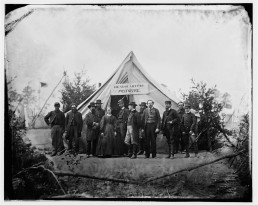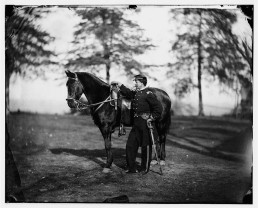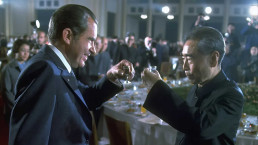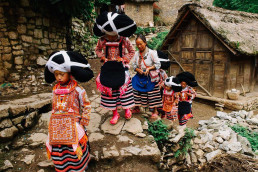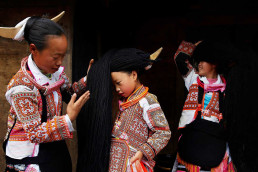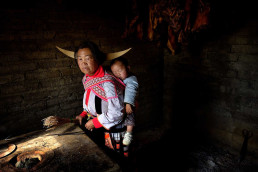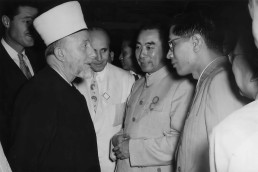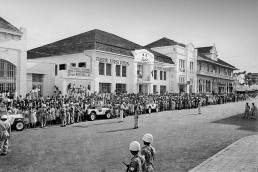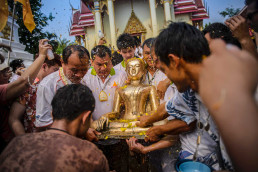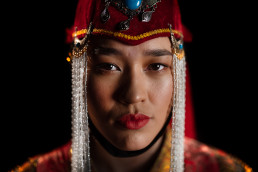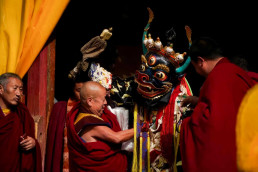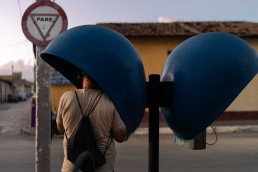Mathew Brady and the Lens of the American Civil War
Few conflicts in history have had such a lasting impact as the American Civil War. A conflict that ripped a nation apart, it not only altered the political landscape but also created the groundwork for modern warfare. Despite the turmoil and bloodshed, one man remained poised with his camera, ready to capture the moments that would define an era. His name was Mathew Brady, and his lens would capture the spirit of a war-torn nation.
The American Civil War, which lasted from 1861 to 1865, was a watershed point in US history. It pitted the Northern states, known as the Union, against the secessionist Southern states, known as the Confederacy, in a fierce conflict over slavery, state rights, and the preservation of the Union. The conflict killed over 600,000 Americans and left a legacy of separation and healing.
Among the tumult of battlefields and the volatility of the times, Mathew Brady emerged as a photographic pioneer. Brady was born in 1822 and went on to become one of the most famous photographers of the nineteenth century. His New York City studio became a gathering spot for the era’s celebrities, and his images of presidents and dignitaries were featured in history books.
However, Brady’s record of the American Civil War would solidify his fame. Brady, armed with his camera and a crew of talented photographers, went into the heart of the conflict, shooting photographs that would expose the horrors of war to the American people like never before. Brady’s images of the Battle of Bull Run and the Siege of Petersburg were eerily evocative depictions of war’s horrors.
Brady’s images not only served as a historical record, but also helped shape public view of the conflict. For the first time, Americans were confronted with the harsh reality of war, sparking a wave of patriotism and demands to action. Brady’s photos, from the shattered vistas of Gettysburg to the mournful faces of soldiers, brought the conflict to life in ways that words could not.
Though Brady struggled financially in the years after the war, his reputation lived on. His photos continue to demonstrate photography’s ability to capture the spirit of a moment and shape history. Brady’s work is now valued not merely for its creative merit, but also for its contribution to maintaining the memory of those who fought and died for freedom.
Mathew Brady is remembered in history for his ability to depict the human experience via photography. Through his lens, we are brought back to a time of tumult and transformation, when a nation’s fate was on the line. As we contemplate on the legacy of the American Civil War, let us remember Brady’s words: “My greatest aim has been to advance the art of photography, and to make it what I think I have, a great and truthful medium of history.”
The Liquid Gold of China’s Cultural Heritage
Few spirits can compare to Maotai in terms of reputation and cultural significance. Maotai is a style of jiangxiang baijiu that originated in the village of Maotai, Guizhou Province, China. It is a clear and colourless liquor that has become a symbol of tradition, elegance, and cultural pride.
Maotai is created with few components, including sorghum, a wheat-based qū, and water from the Chishui River. It uses traditional Chinese fermentation, distillation, and ageing procedures to create a spirit with a distinct nutty, grain-forward, and savoury scent and flavour.The careful production process, which includes many fermentation and distillation phases, can take up to a year, demonstrating a commitment to craftsmanship.
Maotai’s history spans over a thousand years, with its legendary reputation reinforced during the Qing Dynasty. It received international recognition in 1915 at the Panama-Pacific International Exposition, where it was given a gold medal.Since then, Maotai has become a vital element of Chinese culture, frequently employed at official ceremonies and state banquets.
Maotai’s prestige stems from more than simply its distinct taste and production technique.It also concerns perception and historical relevance.Maotai was a favourite drink of Mao Zedong, the founding father of the People’s Republic of China, and was famously offered during state meals.Such effusive endorsements made Maotai the brand of choice for the elite, a must-have at business banquets, and a display of riches.
A variety of factors contribute to Maotai’s high pricing.Its reputation as a luxury spirit stems from its limited production and exquisite crafting.Furthermore, it is regarded a prestige symbol due to its high price and limited supply. This is part of Maotai’s marketing and sales strategy, which has helped it become not only the most valuable spirits brand in China, but also in the globe.
In conclusion, Maotai is more than a spirit. It is a symbol of Chinese cultural heritage, reflecting the country’s rich history and traditions. Despite its exorbitant price, it is nevertheless valued and appreciated, not just for its distinct flavour, but also for the cultural significance it represents. Maotai, whether served at official banquets or given as a dignified memento, is a liquid embodiment of Chinese cultural pride.
Festival In The Highlands: Miao Sister's Meal Festival
A world steeped in tradition and time-honored customs awaits you in China’s Guizhou province, nestled among verdant mountains and flowing rivers. This is home to the Miao people, a vibrant ethnic group with a rich history. Among their various customs, one stands out for its color, music, and communal spirit – the Miao Sisters’ Festival.
The Miao Sisters’ Festival, locally known as the ‘Miao Sisters’ Meal’, is a grand event that takes place annually in the spring. It is a time when the Miao people gather in their traditional silver ornaments and brightly coloured attire to celebrate their shared heritage and strengthen their communal bonds.
The festival is named after the legendary Miao sisters, whose story of love and sacrifice is deeply ingrained in the Miao folklore. The sisters, it is said, used their wisdom and courage to save their people from a great calamity. Today, their spirit lives on in the festival that bears their name.
The Miao Sisters’ Festival is a feast for the senses. The air is filled with the melodious sounds of Lusheng, a traditional Miao musical instrument. The vibrant colors of the Miao attire, coupled with the shimmering silver jewelry, create a visual spectacle that is nothing short of mesmerizing.
But the festival is not just about music and dance. It’s also a time for the Miao people to showcase their culinary skills. The ‘Sisters’ Rice’, a special dish prepared only during the festival, is a highlight of the event. Made from glutinous rice and dyed with natural colours, the dish represents the Miao people’s close relationship with nature.
The Miao Sisters Festival is more than just a cultural celebration. It demonstrates the Miao people’s resilience and unwavering commitment to preserving their traditions. It’s a window into a world that, despite the onslaught of modernity, continues to hold on to its roots.
So, if you’re a traveler with a keen interest in culture and tradition, make sure to mark your calendar for the Miao Sisters’ Festival. It’s an experience that promises to be as enriching as it is unforgettable.
In the end, the Miao Sisters’ Festival is a celebration of life, love, and community. It’s a reminder that in a world that’s constantly changing, some things remain timeless. And it’s these timeless traditions that make our world a more colorful and vibrant place. So come, take a journey through time, and experience the magic of the Miao Sisters’ Festival.
The Dawn of Women’s Emancipation in Indonesia
In Indonesian history, one name stands out as a symbol of women’s emancipation: Raden Ajeng Kartini. Kartini, a Javanese noblewoman, was born on April 21, 1879, in Jepara, Central Java. She became a significant icon for the Indonesian independence movement and Indonesian feminists.
Kartini was born into an aristocratic Javanese family in the Dutch East Indies (now Indonesia).Her father, a Javanese aristocrat who served as the governor of the Japara Regency for the Dutch colonial administration, gave her the uncommon opportunity to attend a Dutch school.Her exposure to Western ideas and fluency in Dutch paved the way for her future involvement.
During her adolescence, Kartini was compelled to live a cloistered life as a Javanese girl of noble birth. During this time of seclusion, she began to correspond with numerous Dutch acquaintances from school.She also knew and was influenced by Mevrouw Ovink-Soer, the wife of a Dutch official and a committed socialist and feminist.
In her letters, Kartini voiced concern about the plight of Indonesians under colonial authority, as well as the limited roles available to Indonesian women.She decided to make her own life a paradigm of independence.Following her marriage in 1903 to a progressive Javanese official, the Regent of Rembang, she set out to establish a school for Javanese girls.
Unfortunately, Kartini died at the age of 25 due to difficulties following the delivery of her first child. Nonetheless, her legacy lives on. J.H. Abendanon, former director of the Department of Education, Religion, and Industry, published her letters in 1911 under the title Door duisternis tot licht (“Through darkness into light”). The novel was extremely successful in the Netherlands, and it helped to raise funds for the Kartini Foundation, which opened the first girls’ schools in Java in 1916, fulfilling Kartini’s aim.
Her ideas were also adopted by Indonesian students studying at Dutch universities, and the letters were translated into Indonesian in 1922 and published. Despite the fact that Indonesian nationalist goals considerably exceeded her expectations, she became a popular symbol, and her birthday is now recognised as a holiday.
Kartini’s influence on women may still be seen today in many areas of Indonesian society.She pushed women to pursue higher education, participate in social progress, and achieve economic independence.Aside from schooling, Kartini battled to end the practice of polygamy, which was harmful to women, advocated for women’s rights in marriage, and opposed forced child marriage.
In conclusion, Raden Ajeng Kartini’s life and advocacy had a significant impact on women’s rights in Indonesia.She defied the established gender roles of her period, advocating for women’s education and empowerment. Her ideas and activities paved the way for Indonesia’s women’s rights movement, and she continues to inspire people today.
Miao Tribe : A Symphony Of Tradition And Culture
Amidst the stunning breadth of Southern China and Southeast Asia’s mountainous terrains, the Miao people present a rich tableau of cultural heritage and historical tale. The Miao are revered as one of the 56 sanctioned ethnic groupings recognised by the Chinese government, and they find refuge among the steep crests of provinces like as Guizhou, Yunnan, Sichuan, Hubei, Hunan, Guangxi, Guangdong, and Hainan. Their presence, however, crosses borders, penetrating the beautiful landscapes of Vietnam, Laos, Myanmar, and Thailand, where their population, estimated to be between 9 and 12 million, whispers stories of their long impact.
Within the Miao realm, the term “Miao” becomes a prism refracting diverse cultural facets, encompassing the Hmu of southeast Guizhou, the Qo Xiong of western Hunan, the A-Hmao of Yunnan, and the Hmong, whose ethereal essence weaves through the fabric of Guizhou, Sichuan, Guangxi, and Yunnan. Each constituent group, linked by linguistic strands, unravels a unique tapestry of customs, histories, and dialects, creating a rich portrait of cultural complexities.
The heart of Miao existence beats with a symphony of colours and harmonies, manifested in their age-old dances—an exquisite choreography echoing with the echoes of their cultural ancestry. Adorned in glittering silver jewellery and enrobed in intricate needlework, Miao costume serves as a canvas for their tale, demonstrating their aesthetic prowess and devotion for tradition.
Miao culture thrives on folk spirituality, which is rooted in their ancestral beliefs. As protectors of animistic realms and curators of ancestral tribute, the Miao travel across a spiritual environment abounding with countless spirits, led by shamans who organise rites to appease ethereal creatures or summon the healing essence for the wounded soul. In solemn rituals, animal sacrifices symbolise the Miao’s fundamental connectedness with the natural world, creating a tapestry of reverence for life’s cyclical movement.
Despite the winds of change, the Miao continue to be land stewards, their agrarian traditions inextricably linked to the earth’s rhythms. As they transition from nomadic cultivation to permanent agrarian methods, they cultivate an abundance of market garden products, symbolising their persistence in the face of modernity’s encroachment—a monument to their adaptability and enduring tenacity.
Miao hospitality is based on an attitude of warmth and camaraderie, with guests greeted with open arms and magnificent feasts embellished with poultry gifts and horn spirit libations—a ritualistic communion that reflects their love for social relationships and ancestral traditions.
The fabric of Miao existence is a kaleidoscope of colours, a symphony of traditions—a living witness to the indomitable spirit of a people whose story spans the ages. Despite the ebb and flow of millennia, the Miao remain a beacon of cultural history, showing the path of human perseverance and the lasting legacy of ancient wisdom.
Capturing the Spirit of the Asia-Africa Conference
Paul Tedjasurja, born on 19 August 1930 in Surabaya, was a dedicated photographer whose contribution to recording one of the most monumental events in Asian and African history, the Asia-Africa Conference in 1955, is unequalled.
He began his photography career in Bandung in 1949, two years after moving, working as a freelance photojournalist for “Gembira” magazine and the “Preanger Foto” agency. His extraordinary artistic abilities were recognised, resulting in contributions to Pikiran Rakjat in 1953.
The Bandung Conference, also known as the Asia-Africa Conference, took place from April 18 to 24, 1955, in Bandung, Indonesia, and was the first international gathering of newly independent Asian and African states. Its goals were to promote international peace and cooperation while condemning colonialism and neocolonialism, providing the groundwork for the Non-Alignment Movement.
Tedjasurja, a 25-year-old freelance photographer, captured around 300 photographs of this historic occasion. He immortalised various moments with his Leica III F camera, a gift from his prospective father-in-law, supplemented by an 8-kilogram flash, additional lighting apparatus, and numerous rolls of black and white film, including the arrival of foreign delegates at Husein Sastranegara Airport, conference proceedings at Merdeka Building, banquets, and the exuberance of bystanders.
Unfortunately, not all of Tedjasurja’s photographic collection survived. A government official borrowed photographs and negatives from the 1955 Asia-Africa Conference but neglected to return them, so their whereabouts are unknown to this day.
Despite this setback, Tedjasurja’s collaborators digitally conserved 63 of his images for the 50th anniversary of the Asia-Africa Conference in April of 2005. These photographs were later included in the book “Bandung 1955: Moments of the Asian African Conference,” which commemorated the conference’s 60th anniversary in April 2015.
Unfortunately, Paul Tedjasurja died on March 27, 2020. His essential contributions to recording the Asia-Africa Conference demonstrate his photographic expertise and passion. His legacy continues to illuminate this momentous event, allowing future generations to better comprehend and appreciate this critical chapter in Asian and African history.
The Unseen Hero of Documentary Photography
In the fascinating field of documentary photography, capturing the essence of reality is critical. Consider joining a tribe in the Amazon rainforest or attending a protest march. The lens you choose functions as an extension of your eye, silently watching and capturing the tale as it develops. But among the huge array of lenses available, one stands out: the humble 35mm.
The secret is in its capacity to mimic human vision. Unlike wider lenses, which can distort perspectives, the 35mm provides a natural field of vision. This results in images that feel natural and authentic, free of any artificial processing. Honesty is essential in documentary photography. A 35mm lens enables photographers to take a close-up portrait conveying real emotion before fluidly shifting to frame a larger scene that includes the surrounding landscape. The audience is brought right into the centre of the drama, experiencing the scene firsthand.
Beyond its capacity to accurately portray reality, the 35mm has tremendous versatility. It is commonly referred to as the “Swiss Army knife” of lenses since it easily adapts to a variety of conditions. Looking to capture the intimacy of a discussion on a busy street corner? The 35mm delivers. Want to highlight the grandeur of a large area while still connecting to the human element? It also excels at this. Furthermore, the 35mm’s capacity to achieve a shallow depth of focus enables creative subject isolation, drawing the viewer’s attention to the centre of the story.
The 35mm format’s historical relevance reinforces its dominance in documentary photography. It all began with the advent of 35mm film cameras, which provided an ideal blend of portability and image quality. This format soon acquired popularity in both film and still photography, becoming the preferred instrument for many of the twentieth century’s most famous documentary photographers.
This legacy endures to this day. The sought balance provided by the 35mm lens works nicely in the field of documentary filming. It enables directors to create a sense of intimacy, transporting viewers to the heart of the story as if they were silent participants. This immersive experience encourages a stronger connection to the characters and the story being told.
The 35mm lens has had an undeniable impact on innumerable great documentary images. Look no farther than the heartbreaking photographs of the Vietnam War shot by photographers such as Nick Ut using his 35mm lens. His shot of “Napalm Girl,” a little Vietnamese kid fleeing a napalm strike, is a striking reminder of the war’s savagery. Sebastião Salgado’s 35mm lens photographs highlight global poverty and social injustice.
The list of well-known photographers who have embraced the 35mm lens is wide. From Bruce Gilden’s evocative street photography to Mary Ellen Mark’s social commentary, the 35mm format has been a reliable partner for countless visual storytellers.
So, whether you’re a new documentarian starting your first project or a seasoned professional looking for a dependable instrument, the 35mm lens is a wonderful asset. With its natural perspective, adaptability, and rich history, it enables you to capture the essence of reality and deliver dramatic stories that touch viewers on a deeper level. The next time you pick up your camera, consider using the “Eye of Truth” – the 35mm lens – to see the world through a true lens.
The Vibrant Traditions of Songkran Festival
The Songkran Festival, held annually from 13 to 15 April, commemorates the traditional Thai New Year. Songkran, derived from the Sanskrit word’saṃkrānti’, meaning ‘to walk into’ or ‘pass into’, represents the astrological transition from one zodiac sphere to another. This celebration is strongly established in Thai tradition and represents purification, regeneration, and the metaphorical washing away of negativity.
Songkran is extremely important in Thai culture since it is a time for spiritual cleaning and renewal. The event allows people to honour their ancestors, make merit at temples, and spend time with loved ones. It is a moment to reflect on the previous year, let go of negativity, and embrace the new year with hope and optimism.
The first day of the holiday, known as Songkran Day, sees people cleaning their houses and public sites such as temples and schools to clear out any bad luck from the previous year and prepare for the new year. Another major activity is Song Nam Phra, a ritual in which fragrant water is poured over a temple’s precious Buddha images.
The second day, known as Wan Nao, is spent preparing food and offerings to be offered to monks and temples the next day. It is also a time to pay respect to elders, and young people prepare rose and jasmine water, as well as Nam Op-scented water, to wash their parents’ feet in a ceremony known as Rot Nam Dam Hua. In exchange, the parents bless the children, usually with a jasmine floral garland.
The annual Songkran encourages community collaboration, unity, and forgiveness. It is seen as a time to symbolically wash away misfortunes, pray for prosperity in the next year, reunite with family members, and remember ancestors and the elderly.
The festival is especially known for its water battles, which have gained popularity among both Thais and foreigners. Soaking someone in water is a Thai ritual that represents clearing off harmful deeds and thoughts. During Songkran, splashing water is thought to bring good health, prosperity, longevity, and good fortune.
Songkran’s significance extends beyond the scope of a single festival. It shapes Thailand’s cultural identity and how the rest of the world perceives this dynamic country. The festival’s global recognition, including its recent designation by UNESCO as a “intangible cultural heritage of humanity, demonstrates its cultural relevance and global effect.
In conclusion, the Songkran Festival is a significant cultural event that captures the essence of Thai culture and tradition. Its influence goes beyond Thailand’s boundaries, shaping global impressions of Thai culture and instilling a sense of unity and rebirth. As we celebrate Songkran, we are reminded of the value of cultural preservation, mutual respect, and the delight of sharing human experiences.
Elisabet's Odyssey Through Cultures and Moments
Within the enormous expanse of photography, photos cease to be just snapshots and instead become portals into the core of cultures, tales, and the human experience. In this domain, Elisabet Chintia stands out, her camera capturing not just moments, but the soul of our variegated planet.
In an exclusive interview with Mahacaraka® Press, Elisabet reveals the core of her photographic journey—her passion, her obstacles, and the deep encounters that changed her viewpoint.
What does photography mean to you?
“For me, photography is about direct observation, whether through a lens or with the unaided eye, immersing myself in the complexities of global cultures and celebrations,” says Elisabet. Photography, for her, is a means of cultural discovery and personal expression.
Could you recount a memorable ‘behind-the-lens’ experience from your recent travels?
“The most gratifying aspect for me is capturing portraits of individuals from diverse ethnic backgrounds, each with their unique facial features and cultural nuances,” she says. Through her lens, she not only captures photographs but also digs into her subjects’ souls, weaving their experiences into her visual tapestry.
What is the most challenging aspect of photographing in unfamiliar environments, and how do you overcome it?
“Adapting to unfamiliar environments, be it extreme weather or unfamiliar cultures, poses a challenge,” she says. However, she approaches these challenges with humility and thankfulness, seeing them as chances for personal development and cultural immersion.
As you travel the globe, which local culture fascinates you the most?
“For me, the allure lies in Himalaya, Africa and India, where every tribe boasts its own unique customs, attire, and architectural marvels,” she says. She finds her inspiration in these varied cultural landscapes, capturing the essence of diversity with each click of her camera.
Can you summarise your photographic philosophy in a single sentence?
“Embrace the unique essence of each destination you visit,” Elisabet suggests. Through her lens, she welcomes viewers on a visual trip, encouraging them to enjoy the world’s many treasures with open hearts and questioning minds.
Elisabet’s insightful thoughts are accompanied with glimpses of her exceptional photography—timeless images that capture the soul of a location or the spirit of its people.
Through Elisabet Chintia’s vision, we are taken beyond geographical limits to a world where cultures collide, tales connect, and mankind discovers a common thread. Her photographs are more than just images; they are invitations to explore, connect, and celebrate the kaleidoscope of life that unfolds before us.
The Enduring Legacy of Ismail Marzuki’s Hari Lebaran
Enjoy the Timeless Melodies of Eid with ‘Hari Lebaran’: A Celebration of Tradition and Unity! Join the Joyous Celebrations and Discover the Cultural Legacy Behind Indonesia’s Popular Anthem. Dive into the Musical Journey of Eid al-Fitr!
As the holy month of Ramadan ends, the joyous holiday of Eid al-Fitr, also known as the “Festival of Breaking the Fast,” begins. Among the official receptions, private visits, and the exchange of gifts, there is one tradition that resonates across generations and borders: the eternal tune of “Hari Lebaran” created by Ismail Marzuki.
Ismail Marzuki, an Indonesian music master, composed “Hari Lebaran” in the 1950s, shortly after Indonesia gained independence. Didi, a pseudonym for Suyoso Karsono, originally performed this song at RRI Jakarta in 1954. The song soon acquired popularity and has since become an essential part of the Eid al-Fitr festivities.
“Hari Lebaran” is more than just a joyous song. It is a social critique that reflects the times in which it was created. The lyrics are more than just welcomes; they also include subtle criticisms. This combination of joyful celebration and critical critique is likely what has kept “Lagu Lebaran” relevant and popular to this day.
Throughout the years, several performers have covered the song, each with their own unique interpretation. From Gita Gutawa to Tasya, Ungu to Deredia, each performance has helped to keep the song alive in the hearts of its listeners. The song’s adaptation to different musical forms demonstrates its eternal popularity.
Eid al-Fitr is a time for meditation, celebration of faith, and joy. As families and friends meet to celebrate the conclusion of the fasting season, “Hari Lebaran” frequently acts as the soundtrack. Its song ripples across homes and streets, adding to the celebratory ambiance.
In conclusion, Ismail Marzuki’s “Hari Lebaran” is more than just a song. It is a cultural artifact, a piece of history, and a treasured tradition. As we commemorate Eid al-Fitr, let us remember this eternal tune that continues to bring us together in celebration, meditation, and thankfulness. Here’s to the enduring heritage of “Hari Lebaran” and the timeless melodies of Eid al-Fitr.

